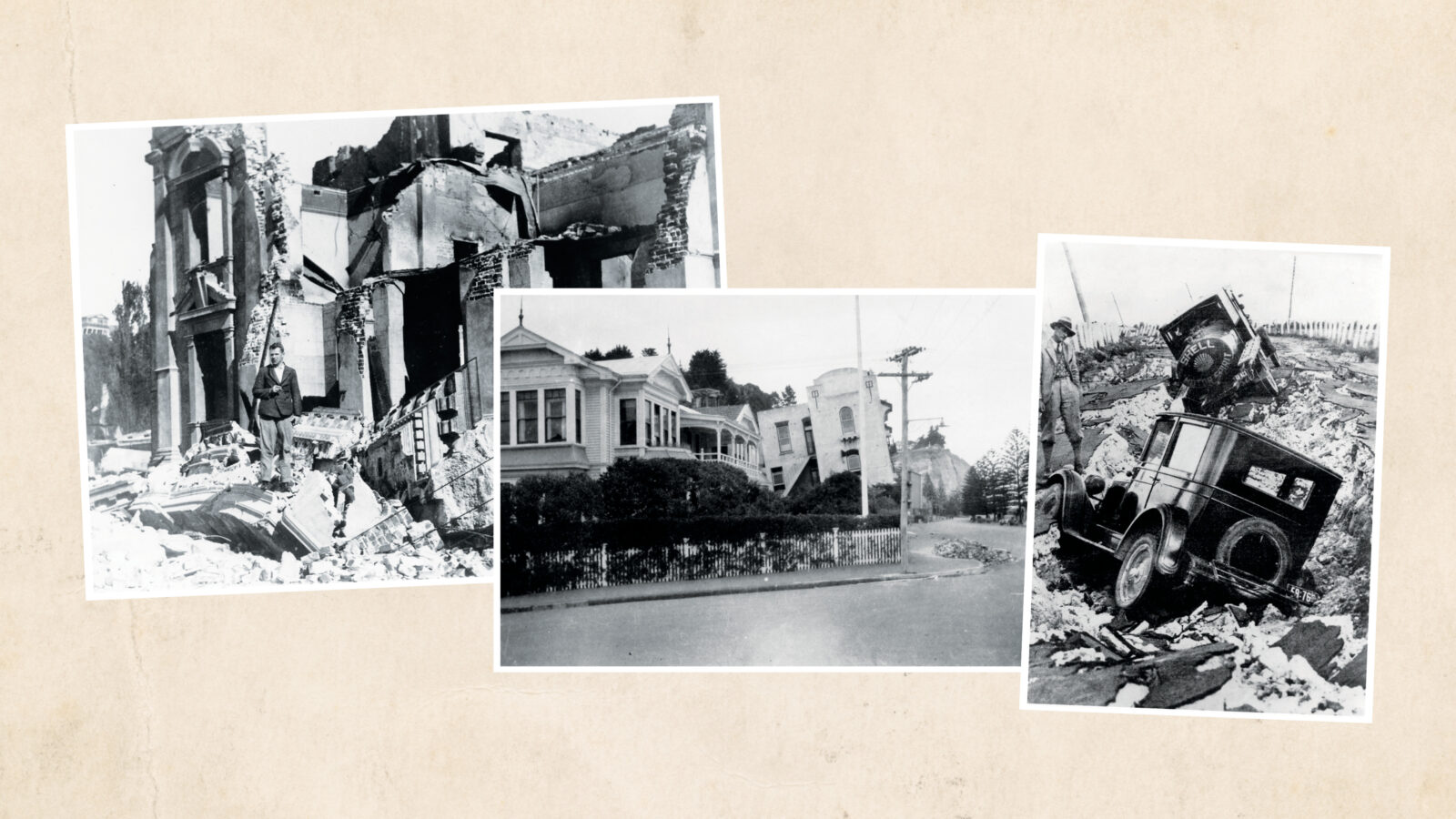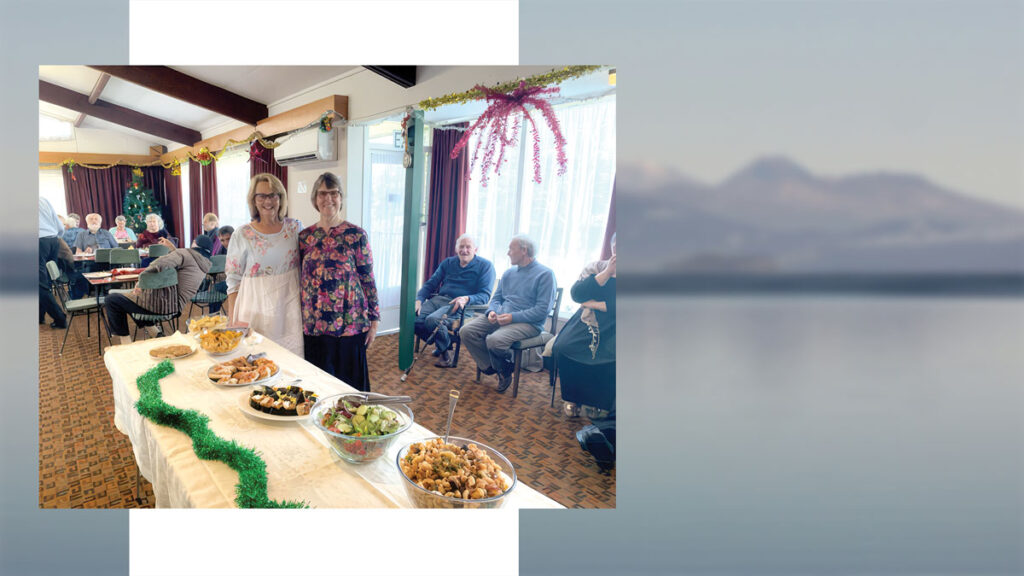On Tuesday February 3, 1931 a magnitude 7.8 earthquake struck the eastern coast of North New Zealand. It is regarded as New Zealand’s deadliest natural disaster, with 256 people killed, Napier city destroyed and the landscape completely rearranged. A STOP PRESS announcement was included in Record on February 16 stating: “Cable from New Zealand Auckland, February 5. Napier church destroyed by fire. Adventists safe as far as ascertainable.”
Of the 200 Adventist members located in the Hawkes Bay area, there was one death and multiple miraculous escapes. During the months following the disaster, various letters and news of Adventists in the affected areas were printed in Record. Here are some of their experiences.
Albert Piper, AUC secretary, was attending the South New Zealand camp meeting when the earthquake hit. Along with Thomas Hammond, AUC treasurer, they travelled to Napier to find news of members:
“On reaching the area itself just about sunset Sunday evening, February 8, we found the city of Napier deserted and desolate, except at such centres as refugees were accommodated in camps. We went first of all to the Telegraph Office (which was in improvised quarters in one of the public schools) in order to get any telegrams awaiting our party. Here we found four thousand telegrams still unclaimed.
On going a little farther into the town we found it in the care of marines and sailors off men-of-war, who were on patrol with drawn bayonets. This was necessary in order to prevent visitors from advancing too close to dangerous positions, as well as for other reasons.
As darkness cut short our opportunities to see farther, we prepared to retire for the night in the chimneyless home of Sister Caro Senior. She had left Napier and was many miles away, being lovingly cared for at the home of some friends. Her house had had the chimney shaken out of it, but we planned to stay there for the night. As we were about to retire we felt a very severe shock, and before the writer fell asleep that night he experienced no less than eight definite earthquake shocks; and after awakening in the morning and before arising at an early hour, we counted five more. Later during the day as we were travelling along Battery Road, Napier, we noticed much soil and many boulders coming down the hillside, and on stopping our car, found that another very violent shake had occurred. In many places the roads had subsided, even to the extent of ten feet. In other places they had been raised. The bed of the harbour has been raised seven feet. In some parts at sea the ocean bed has been raised as high as 70 feet.
As our objective in visiting the area was not one of curiosity, but rather because we felt much concerned for our own dear people, we did all that was possible to trace them out. We found that many of them had left Napier and were being cared for at different points in North New Zealand. We were able, however, to visit a few, and we were so glad to take their hands and pray God’s comfort and protection to continue to be with them.
Three of our young people had miraculous escapes. Sister Zena Mintoff, who had served very faithfully only a few days before at the North New Zealand camp meeting . . . was with her father in the main street of Napier when the shake came. A shower of bricks and mortar fell upon the car in which she sat, nearly filling it. She had her shoulder blade cracked and was unable to extricate herself. The quake, continuing, seemed then to take a spiral and upward movement, and lifting the car clean out of the debris that covered it, placed it in the middle of the road. This enabled our sister to climb out. She found her father lying prostrate near her, but they were both rescued and taken to the beach as the only place of safety in the vicinity. We greatly rejoice with the Mintoff family that their injuries were no worse.
Nurse Grace Tasker was struck on the head when the Napier Hospital fell, killing some 15 or more nurses, but she is now reported fully restored. Glen Plowman, one of our boys, was attending the technical school and escaped death by inches when the building fell. In this school no less than fourteen boys lost their lives.
We are glad to report that so many of our members had miraculous escapes. Dr Eric Caro, the loved and respected elder of the Napier church, escaped with his life while bricks and mortar fell all about him. He was operating in his dental office on the main street of Napier, and escaped with but a few pence in his pocket, losing all that he possessed in connection with his profession. We found the doctor very cheerful and courageous in the Lord, and despite his own losses he had done good, faithful service as a shepherd of the flock in trying to hunt up and help the members of the church.”
Len and Enid Wilkinson, and their 18-month-old daughter Valma, were visiting relatives in Hastings when the earthquake struck. They had travelled from Perth, Australia, and were due to sail on to Fiji, where Len was starting a new role as principal at Navesau Adventist High School. The excerpt below featured in Record and was taken from a letter Enid wrote to her parents:
“I was just putting the baby to sleep that morning when a terrible shaking began, and I wondered what was happening. Valma awakened and screamed and clung to me, and then I looked at Len. He was sitting up in bed, his face as white as the sheet and his eyes like saucers, and his bed was skating around the room, while books and bottles and everything movable was thrown about the floor. The terrible shaking increased in intensity. Len realised the seriousness of it, and as soon as a lull came he rushed to the window and jumped out, calling me to hand him the baby. I jumped out, too. The footpath outside was going like the waves of the sea. Every chimney was down, crockery and glassware lay broken all over the floors, and every piece of furniture was out of its original place.
After it quieted down a bit, we walked a block to the main street to see how the town had fared. The sight that met our eyes was terrible. Every brick building was destroyed, and already dense clouds of smoke and flames were bursting from the ruins. Our hearts bled as we thought of the people lying in the debris. Len’s brother came rushing home; it was the first day of high school, and only the fact that the boys were out in the playground saved them, for a big portion of the school building collapsed.
During that day we must have had close on 60 minor quakes, with two severe ones at night. Of course, sleeping in the house was out of the question, so we fixed up a hessian shelter on the back lawn, braved the house to drag out some kapok mattresses and blankets, and there we all slept—or tried to—in our clothes, rocked by Mother Earth. That is how we lived from then on. Everyone is outside. The quakes still continue, and so the Government has sent up a lot of tents for the people to camp out. The last night we were in Hastings we had a tent, too.
As far as we know, all our people in Hastings are safe. Of course Napier had a worse time than Hastings. Oh, the tales of woe we hear! The papers are not exaggerating, they don’t tell half the horror of it. We’ll never forget it—I live through that first shake even in my sleep.”
In February 1932, Record reported on the dedication of the new Napier church. Through many generous donations it was able to be rebuilt on the existing site where the original building had been destroyed by fire. The pulpit and organ were able to be saved from the ruins and featured in the new building.






